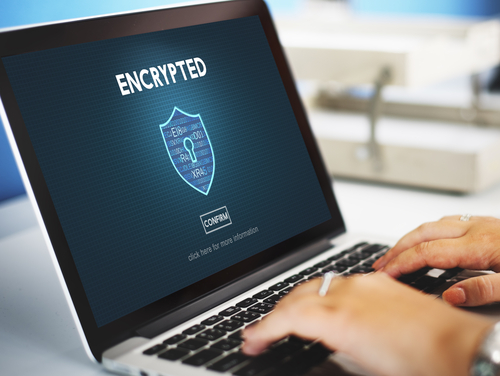You open up your email client, compose your message, and hit send. It all seems so easy, but what happens when you hit “send”? Email clients use 3 major email protocols to send your messages: SMTP, IMAP, and POP3.
Each of these protocols functions a little differently. Read on to learn the differences between SMTP, IMAP, and POP3 email protocols.

What is SMTP?
Simple Mail Transfer Protocol (SMTP) is a protocol that allows you to send and receive emails. Mail servers use this application to send, receive, and relay outgoing mail. This is the essential protocol that allows communication between senders and receivers when using email.
Email protocols are rules that allow email clients to exchange information. SMTP is one of the most common. These email protocols are managed by servers. An SMTP server collects, processes, and serves email.
All messages travel through this mail server before reaching their destination. These servers allow you to send messages from one domain to another. The SMTP works with a mail transfer agent to get your email across networks.
There are several SMTP server providers such as the following:
- AOL
- AT&T
- Comcast
- iCloud
- Gmail
- Outlook
- Yahoo!
SMTP servers work to make sure the email is deliverable.
How Does SMTP Work?
A user hits “send” on an email. The email client then opens up an SMTP connection to a server. SMTP uses HELO, a code that identifies the email client to the SMTP server. The server will then send back its domain name and IP address to begin the transaction.
SMTP uses a Transmission Control Protocol connection, which is a standard for exchanging data between different devices. TCP sends packets over the internet to deliver data over networks. Next, the SMTP client tells the server what to do. It then transfers data such as the sender’s email address, the recipient’s email address, and the message content using a MAIL FROM code.
The Mail Transfer Agent (MTP) will then check to see if the email addresses are on the same domain. If they are, the email will be sent immediately. If not, the server will use the Domain Name System (DNS) to send the message to the right server.
According to how many email addresses the email is going to, the RCPT TO code will go back and forth multiple times to send the email to the correct server. Then, data will be sent between the client and the server.
Once the email has been sent, the client will send a QUIT command to sever the connection to the server. Then, the server will reply with a 221 code to successfully close. If the sender inputted the wrong email address, the command RSET may need to be entered. This aborts the mail transaction and removes all the previous data about the email.
What is IMAP?
Email clients use push and pull protocols to transfer emails. SMTP is the major push protocol, which sends emails. Internet Message Access Protocol (IMAP) is a pull protocol, which is a way of receiving and storing emails.
IMAP gives you the ability to access your email from any device, no matter where you are. This email protocol determines how the server stores and deletes your messages. IMAP does not download and store your emails on your devices, instead, you read your messages through the email service.
The IMAP system stores your emails even after they are delivered. The message only downloads once you click on it. Also, attachments don’t automatically download. This helps to bolster your email security.
How Does IMAP Work?
With IMAP, the email client uses SMTP servers to send the message. After the message is sent, IMAP takes control and defines how servers receive the emails. The IMAP client is on one side and the IMAP server is on the other running on different PCs connected through a network.
The email client retrieves the mail you request from the server and the protocol acts as the intermediary. The server stores your emails and caches the content on your local devices. Before you click your email, the message is not on your device.
All you see are the headers of all the emails in the folder. When you click on the message you want to view, IMAP downloads a copy of that message. Attachments will only download once you click on them.
The protocol then synchronizes any activity that you do in your email folder. So, all your sent items, drafts, photos, forwarded messages, and deleted items will appear the same on other devices that access the IMAP server.

What is POP3?
Post Office Protocol 3 (POP3) is an internet standard protocol that retrieves emails from a mail server using a TCP/IP connection. This pull protocol is an alternative to IMAP. POP3 works similarly to IMAP in that the mail lives on remote servers managed by the email client.
When a user opens up their mail application, the new emails are downloaded onto their PC or Mac. Then, they are deleted from the servers. So, you cannot access these emails from anywhere but that same computer.
Sent mail is stored locally on your computer rather than the email server. Some email clients allow you the option of having copies of your emails saved on their server for a period of time, but this is not always the case.
POP3 protocol is often the primary protocol for Internet Service Provider (ISP) email accounts. Because of its lack of synchronization, it is a less popular pull protocol.
How Does POP3 Work?
With the POP3 protocol, after you hit the send button, your email travels from your PC to your mail server with the SMTP push protocol. After it reaches the server, the POP3 protocol will handle how the message is stored and sent to the recipient.
Once a recipient initiates the download, POP3 will retrieve the email from the server and send it to your local device. Then, it initiates a deletion of all data, including folders and attachments from the remote server.
POP3 protocol doesn’t sync by default. You will only be able to see messages that you downloaded on that particular device when you open your message app. You cannot access email from multiple machines at the same time.
However, some modern webmail services have configured POP3 to store copies of messages on their server for a time before deleting them, which can make synchronization more possible.
What Are The Major Differences Between SMTP, IMAP, and POP3?
In 2020, around 306 billion emails were sent and received daily around the world. Experts forecast that emails will continue to grow over the next few years. So, it is important to make sure you understand how your email works and which type is best for your current needs.
The major difference between these 3 email protocols is in how they store your email data. SMTP is a push protocol, so it is used to send all emails. The protocol sends emails from the sender’s device and delivers them to the receiver’s mailbox.
POP3 and IMAP store emails on remote servers and do not download messages until the user initiates the download. These protocols are used to receive emails. POP3 and IMAP protocols are a part of a webmail provider’s email infrastructure that dictates the way emails are stored, organized, and accessed.
IMAP stores emails on a remote server and syncs them across devices so you can access them simultaneously. POP3 deletes messages from the server once they have been downloaded locally. IMAP keeps copies of an email to make retrieval easier while POP3 cannot be used on multiple devices.
So, when you are considering which one to use, you need to think about your needs when it comes to email.
Which Email Protocol is Best?
SMTP is the protocol used for the sending of all emails, so it is the obvious choice. But, you may be wondering whether IMAP or POP3 protocols are better for receiving emails. Both protocols have advantages and disadvantages to consider.
There are many email clients on the market, and different ones utilize one or the other pull protocol.
IMAP Pros and Cons
If you need to access your email no matter where you are, IMAP is a great choice. Whether your emails are for personal or business communication, you’ll be able to see them in real-time and have the changes on whatever device you are currently using.
This type of protocol is also great for people who travel a lot. IMAP works great for shared inboxes or reply-focused activities. This protocol is fast and flexible. You can access, organize, and sort your emails quickly without having to first download them.
You can also organize your email both on and off the server, giving you plenty of control over how your emails are stored. Yet, with IMAP you have to have an internet connection to access your emails, so if you are offline, you won’t be able to access your email history.
Since IMAP stores copies of your emails on its servers, your emails take up more space on the server. You’ll have to delete old emails if your server is out of storage space. Or, you’ll have to upgrade to other premiums to get the server storage space you need.
IMAP servers are also more difficult to maintain than protocols such as POP3. They are also more vulnerable to cyberattacks. The stored data makes the perfect target for hackers to try to steal your information.
Typically, IMAP clients need to add better configuration, multi-factor authentication, and encryption to improve their security.
POP3 Pros and Cons
POP3 is great if you want your messages available even when there is no internet connection. Any downloaded emails will always be available on your device. POP3 protocol also saves mailbox space since the server deletes messages after they are downloaded. Emails also travel to you quickly and your attachments download automatically to your device.
However, POP3 isn’t great for people who need their emails on multiple devices. Whichever device you download an email on is where it will stay. You also cannot download emails to multiple devices at once.
POP3 also makes it difficult for you to transfer your mail folders. Additionally, since attachments automatically download, they can contain malware, corrupting your device. You can make your POP3 email more secure by installing anti-virus software onto your device to detect and prevent the downloading of malicious software from your emails.
Sekur Provides Encrypted Email
Choosing the right email client can be daunting. There are so many companies that offer their own version of email. But, if you are looking for a secure and private way to communicate with your peers, Sekur has encrypted, Swiss-hosted email, VPN, and instant messaging to meet your needs.
Our 100% private platform allows you to communicate privately and securely with Sekur and non-Sekur users alike. We are free from big tech hosting and do not data mine. SekurMail allows you to send unlimited-sized attachments.
You can send encrypted emails outside Sekur and have recipients reply within our safe environment. Switching to Sekur is easy with our email migration tool. You’ll be able to monitor all your email activity easily from any device.
You can choose to limit the number of times a message can be read before it is destroyed on all devices and our servers. You can also password-protect mail reads and set expiration dates and times for when the message will no longer be accessed.
SekurMail is a great way to regain your privacy.
Conclusion
Email has been around since 1971, and as the years have gone on, it has changed and adapted to new technologies. As email has become an indispensable way of communication in the modern world, it is important to understand exactly how email works. Then, you can choose an email client that provides the type of service that best benefits your needs.
SMTP, IMAP, and POP3 are different types of email protocols that work to send and store your emails. Each has its benefits and uses.

